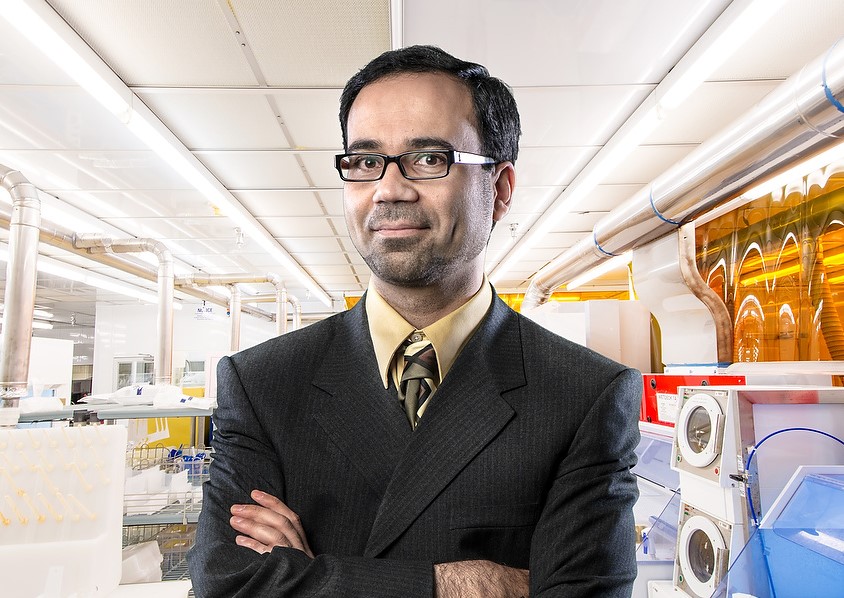
Mahdi Tavakoli has multiple biomedical engineering projects on the go-one of the most ambitious is to build a robotic arm that could safely operate on a beating heart.
(Edmonton) When we think of robots, we think of massive yellow arms bolting together car parts, of drones flying silently through the sky, and of rovers exploring the outer reaches of the solar system.
Rarely do we think of a robot performing surgery on a beating human heart, but Engineering at Alberta researcher Mahdi Tavakoli does.
Heart surgery is an extremely risky procedure and the fact that it requires the surgeons to stop the patient's heart in order to perform the operation introduces even greater risk. It involves the use of a heart-lung bypass machine that oxygenates then circulates blood through the patient's body.
"The problem is that it has risks," said Tavakoli. "There's increased risk of a stroke and other problems for people who have had a bypass machine used on them. It's basically a risky position."
Tavakoli looked at this risk and was driven to find a new way to perform heart surgery-without stopping the heart.
A professor in the Department of Electrical and Computer Engineering whose work focuses on medicine and robotics in health care, Tavakoli holds degrees in electrical engineering, control systems, and robotic systems for minimally invasive surgeries. His current research explores novel designs and applications of medical robots.
"What we are trying to do is create systems that allow the surgeon to operate on the heart as if it's idle and not beating. But it's actually still beating," Tavakoli said. "We use a robotic manipulator that synchronizes its motion to that of the heart. As the heart is moving up and down, the robot moves the surgical instrument up and down in synchronized motion with the heart."
No human surgeon's hands are be capable of matching the movements of a beating heart. Synchronizing a beating heart and the movements of a machine is no simple task. It requires real-time processing of ultrasonic images taken 30 times per second.
"We process them and detect heart tissue and its motion within frames," Tavakoli said. "By taking the position of the heart tissue, we are able to get a robot to follow that position all the time."
This computing and monitoring comes together to allow the surgeon to operate on a beating heart.
So far, Tavakoli has been able to synchronize the motion of the beating heart with a surgical instrument along a single axis of motion, but in practice the motion of a beating heart is three dimensional.
"We have shown the proof of principle of how this could work for very simple motions," Tavakoli said. "What we are working on now is extending those principles to actually work for sophisticated motions. After that we can think about clinical translation."
Tavakoli is a driven scientist and inventor who is pushing the boundaries of medicine and robotics. He is grounded by a simple desire: to help people.
"This is basically an example of a robot creating a completely new treatment option," Tavakoli said. "Something that's not possible today will become possible, and people will benefit from it."